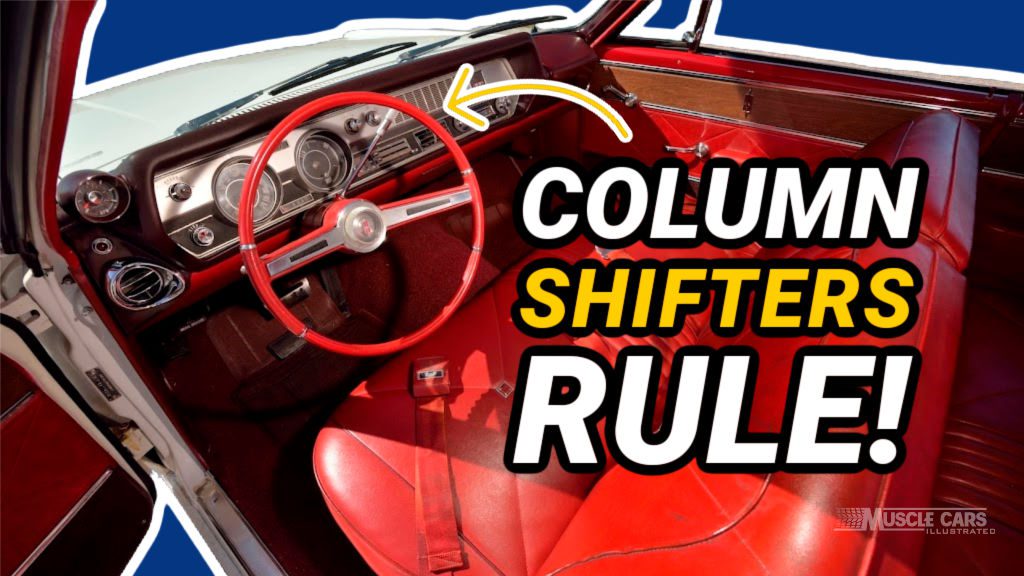
Love them or hate them, muscle cars with column shifters are just as much a part of muscle car history as their floor-mounted siblings.
The column shifter appeared on more than just the base model cars, often appearing on the best muscle cars of the 60s and 70s.
Today’s article will discuss what makes the column shifter awesome, including its history, and show you some unexpected examples from GM, Chrysler, and Ford.
But first, let’s look at what a column shifter is and a bit of its history.
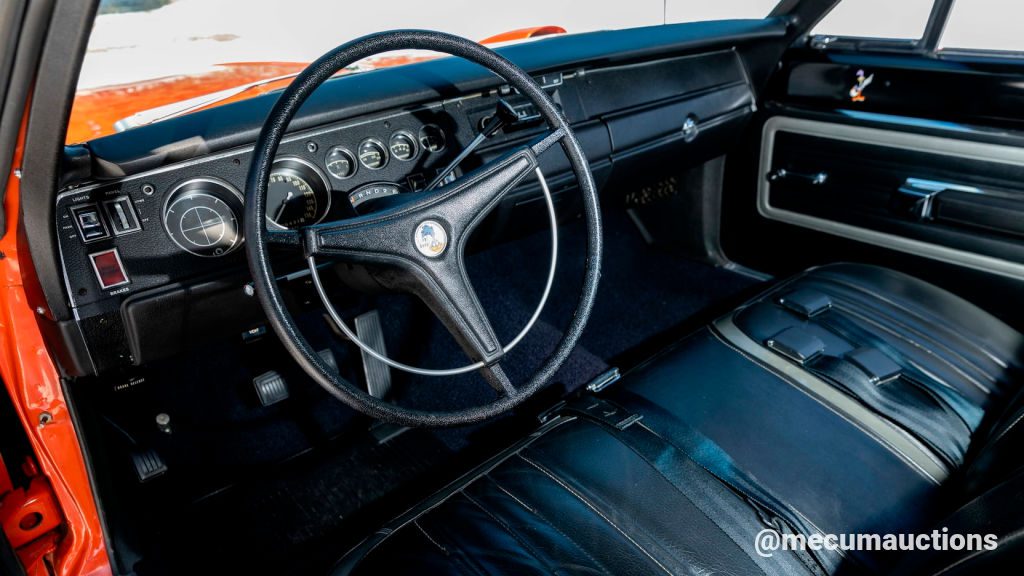
Table of Contents
What is a Column Shifter?
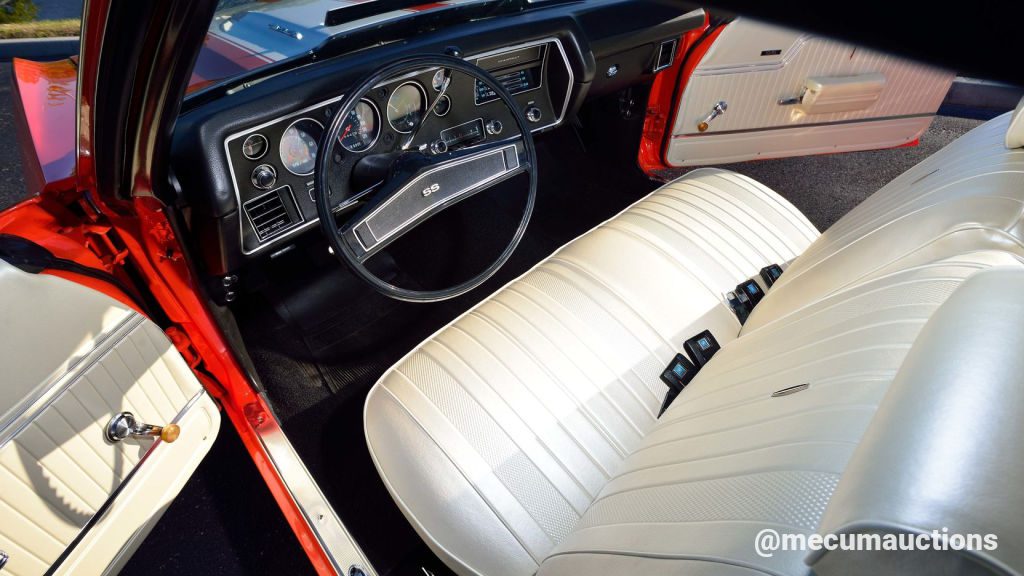
A column shifter is the gear selector positioned behind the steering wheel, located on the steering column, allowing for more space on the front seat for an additional passenger. Automatic vehicles with bench seats came with a column shifter if not equipped with a pushbutton selector on the dashboard.
History of Column Shifters
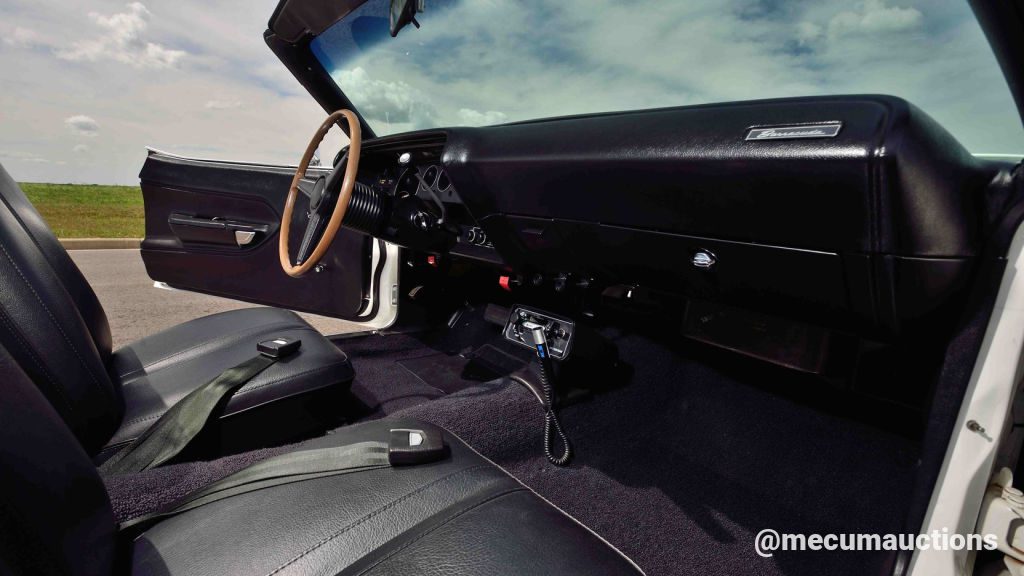
Column shifters have been around since the late 1930s. Over time, there were two versions of column-shifted transmissions: (1) manual and (2) automatic.
Either transmission shifter was mandated on the column if you ordered a bench seat interior.
Auto manufacturers offered the “three on the tree” manual transmission option featuring a column shifter with three pedals on the floor.
In the late 1950s, shifters migrated to the floor, including on the 1957 Corvette when the “four-on-the-floor” 4-speed transmission was introduced.
The floor-shifted automatic appeared in the early 1960s, starting in the 1961 Oldsmobile Starfire that came standard with bucket seats and a center console.
Vehicles like the Starfire helped trigger the popularity of the center console by the time the mid-60s rolled around.
Auto manufacturers also offered a column shifter on vehicles with automatic transmissions—initially only with bench seats and later with bucket seats.
The Rise of Column Shifters in Muscle Cars

Something shifted (no pun intended) once bucket seats grew in popularity during the mid-to-late 1960s when high-horsepower muscle cars with bucket seats and column shifters started to appear.
The rise of column shifters stems from a few variables and, if I had to guess, was done on purpose even when having a center console was all the rage.
Here’s why:
First, the automatic transmission with a column shifter was often a $200 upgrade ($1,600 today) from the base manual transmission.
Second, ordering bucket seats was also an additional $50 upgrade ($390 today) from the standard bench seat interior.
Third, upgrading to an automatic transmission didn’t immediately trigger a center console from the factory—the console had to be optioned separately at an additional cost of roughly $50 ($390 today).
When you just spent $250 ($1,990 today) on bucket seats and the automatic, spending an additional $50 ($390 today) to get the center console was too expensive for many—even if they preferred it.
Fourth, some buyers wanted bucket seats and column shifters to add a cheaper aftermarket B&M or Hurst floor-mounted ratchet shifter after purchase to save money.
So, either the cost of the center console or the bucket seats gave buyers enough pause, or they wanted the extra seat up front afforded by the bench or the “buddy seat” option to keep their lady friends close.
Column Shifters Weren’t Just For Little Old Ladies
There is a common tale that only little old ladies owned column-shifted vehicles to get groceries on Sundays, while others believe they should’ve been left to trucks and non-performance vehicles.
While that probably happened occasionally, that’s not what happened by and large.
Automatic shifters mounted on the column started to appear in many high-horsepower muscle cars, both with bench seats and buckets and were sold to a wide variety of buyers—young and old.
I’m surprised whenever I post a muscle car with a column shifter on Instagram or Facebook, only to see how much negativity it receives.
It’s not uncommon to receive comments like “I love everything about it, except the shifter” or “Too bad it has a column shifter.” However, my favorite is the barf emoji 🤮 in the comments.
Perhaps I don’t understand this hate because I own a 1972 Dodge Charger Rallye with a column shifter and bucket seats. While this makes it less desirable to some, I love it and don’t regret my purchase.
I wasn’t going to pass on a solid numbers-matching muscle car with two broadcast sheets and its fender tag just because it had a column shifter.
Examples of Classic Muscle Cars with Column Shifters
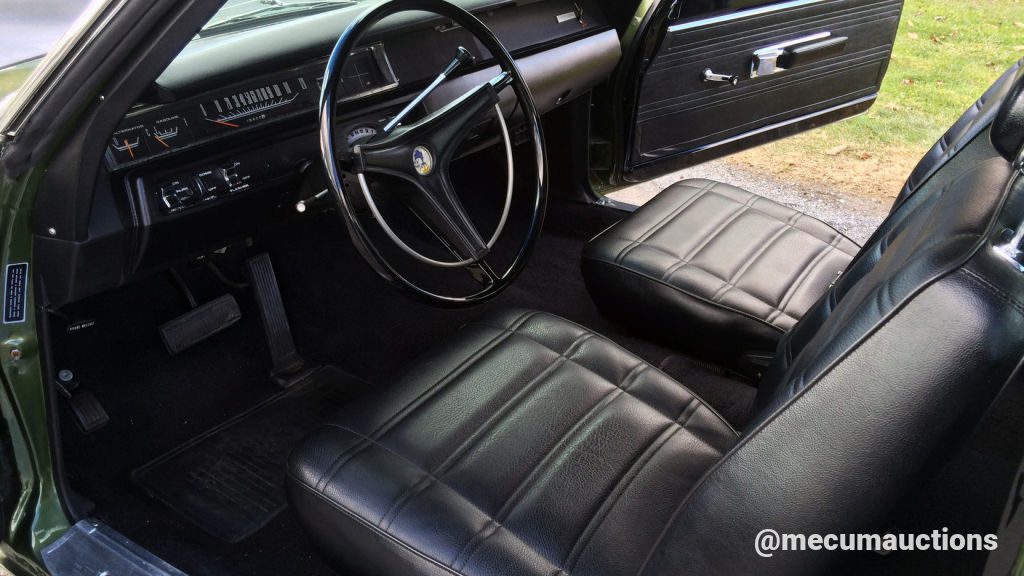
| Year | Make | Model | Engine |
|---|---|---|---|
| 1970 | Plymouth | Superbird | 426 Hemi |
| 1970 | Chevrolet | Chevelle SS | 454 LS6 |
| 1969 | Plymouth | Roadrunner | 440 Six Pack |
| 1969 | Ford | Cobra | 428 Cobra Jet |
| 1971 | Buick | GS | 455 Stage 1 |
| 1972 | Oldsmobile | 4-4-2 | 455 W-30 |
| 1971 | Pontiac | GTO | 455 H/O |
| 1969 | Chevrolet | Nova SS | 396 L78 |
| 1970 | Ford | Torino | 429 Cobra Jet |
Drag Racers Often Preferred Column Shifters
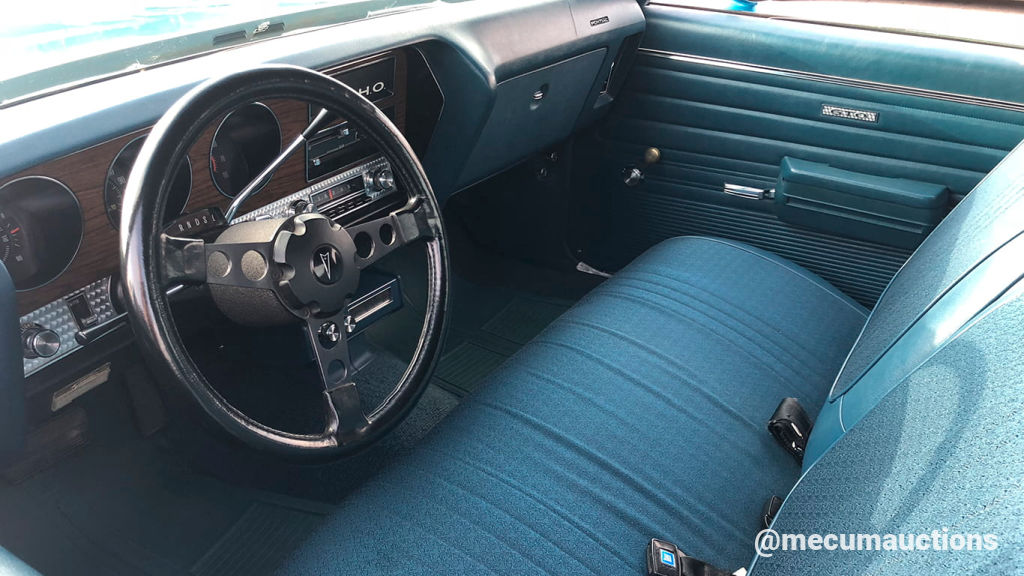
While many people today prefer a floor-shifted automatic or manual shifter, drag racers of the past didn’t always want this at the drag strip.
Drag racers repeatedly chose automatic transmissions because they were lighter, easier to shift, and typically produced more consistent ET times at the track than their manually shifted counterparts.
In fact, many drag racers of the era preferred the column shifter over an automatic shifter in the center console for safety, focus, and confidence.
First, it was safer because the gear selector on the column kept both hands closer to the wheel in case something went wrong when going down the track.
Second, it was less distracting because they didn’t have to take their eyes off the track as long as they shifted through the gears to visually confirm they were putting things in the right gear.
Third, it made them more confident because they were less likely to accidentally throw it into neutral because the gear selector indicator was in their field of vision.
All of these factors combined made for more consistent ET times on track day—and that’s the name of the game.
Whether the column shifter was ordered with a bench seat, buddy seat, or bucket seat, these uniquely optioned muscle cars can be just as exciting to own and drive as their floor-shifted counterparts. That is if you let them.
Be sure to subscribe to see more content like this!
Take Our Poll!
Ryan
Ryan has owned muscle cars since 1986 and currently owns a 1972 Dodge Charger Rallye. He combines passion and experience to create engaging content for fellow muscle car enthusiasts. In 2018, he founded Muscle Cars Illustrated, authoring hundreds of articles on tips, history, and trends in the muscle car industry. He attends national car shows, auctions, and museums to stay current with the latest developments in the muscle car industry.Comments
Comments are closed.

Ridiculous column shifters are for 100 year old grannies real muscle cars have floor shifters stop being Ridiculous.